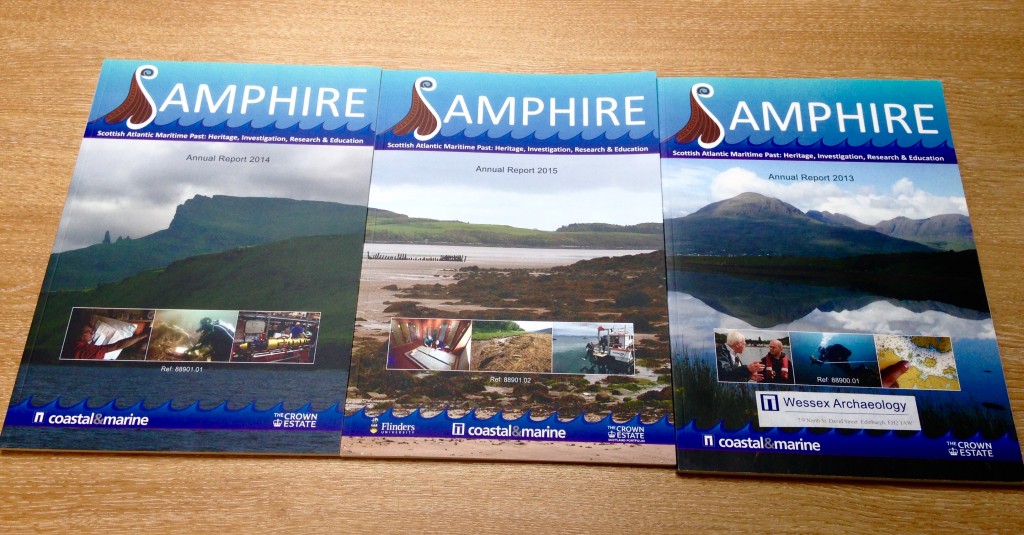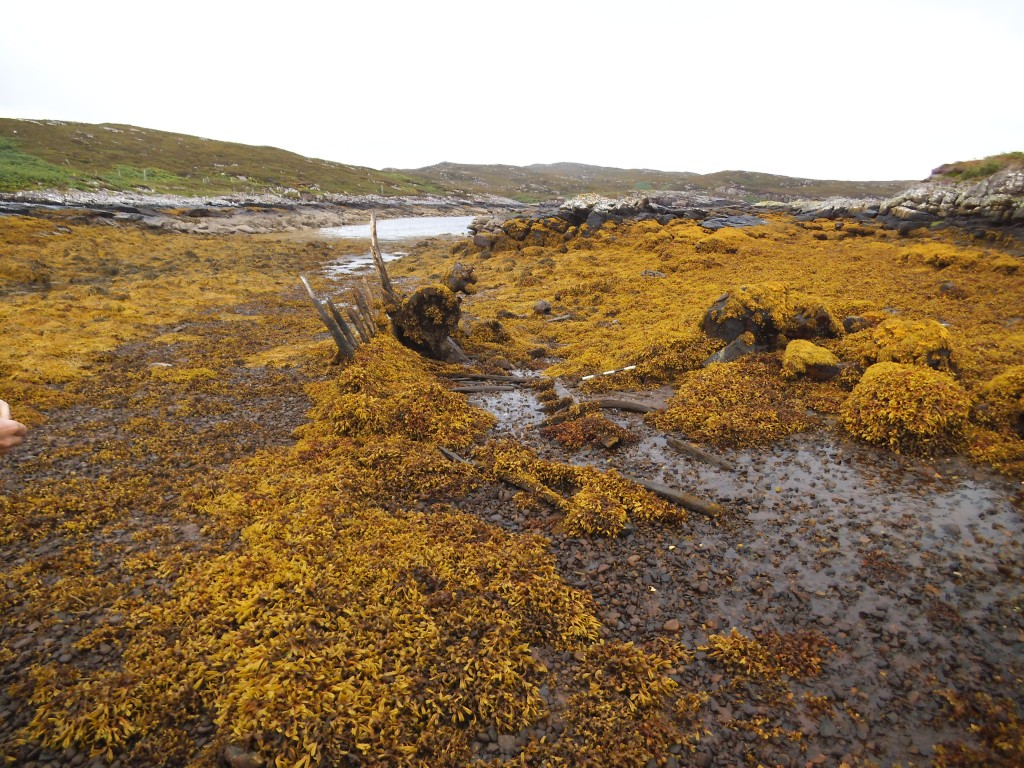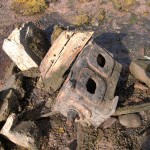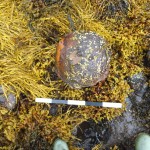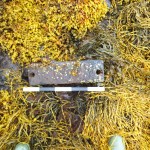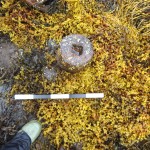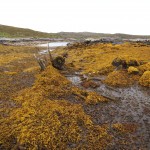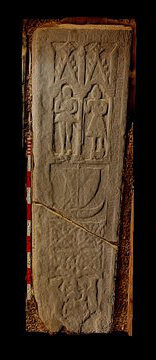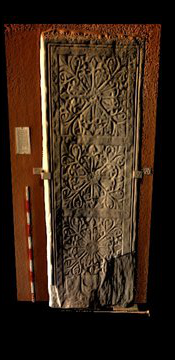We are delighted to announce that SAMPHIRE has won the prestigious European Union Prize for Cultural Heritage/Europa Nostra Awards 2017. SAMPHIRE, which was funded by The Crown Estate, was devised and run by Wessex Archaeology, using the expertise of Dr Jonathan Benjamin, and former Wessex Archaeology Manager John McCarthy who is now based with Dr Benjamin at Flinders University in South Australia.
The award win is one of two in the UK and comes in the Education, Training and Awareness-raising category, since the project team worked with local communities along Scotland’s west coast to help find previously unknown archaeological sites in the marine environment. This was done through face-to-face meetings with harbour masters, scallop divers, recreational divers, fishermen and others, as well as with local residents in the coastal towns and villages. Once the identified locations had been recorded, the most promising were visited by teams of professional and volunteer archaeological divers to verify the information received.
The European Union Prize for Cultural Heritage/Europa Nostra Awards was launched by the European Commission in 2002, and has since been run by Europa Nostra. It celebrates and promotes best practices related to heritage conservation, research, management, voluntarism, education and communication. In this way, it contributes to a stronger public recognition of cultural heritage as a strategic resource for Europe’s economy and society. The Prize is supported by the Creative Europe programme of the European Union. Independent expert juries examined a total of 202 applications from 39 countries across Europe, and chose just 29 winners in a number of different categories.
Chris Brayne, Chief Executive of Wessex Archaeology, said:
“We are delighted to have been announced as a winner of this prestigious European prize which celebrates best practice in heritage conservation, research, management, education and communication. This was an innovative, collaborative, project which involved over 100 members of the local community along the coast of West Scotland. We were very fortunate in being able to partner with a great many local and national organisations including community dive clubs and scientific partners such as the Scottish Association of Marine Science”.
Chris and the SAMPHIRE team will be presented with their award by EU Commissioner Navracsics and Maestro Placido Domingo at an event in Finland on 15 May 2017.
From now until the 3rd of May you have the opportunity to cast your vote in as People’s Choice award for SAMPHIRE and 30 other fantastic projects at https://vote.europanostra.org/ Voters have the chance to win a trip for two to Finland and be a special guest at the Awards Ceremony. Details of the Europa Nostra press release are quoted below.
SAMPHIRE: Maritime heritage project in western Scotland
In exploring beneath the waves of Scotland’s West coast, the team behind SAMPHIRE – Scottish Atlantic Maritime Past: Heritage, Investigation, Research & Education has added a rich new layer to the fabric of Scotland’s history. The holistic approach of this project was impressive and left no stone unturned in investigating new approaches to safeguarding our shared underwater heritage.
The project is the result of a collaboration of researchers from Scotland, Spain and Australia which sought to investigate how community engagement in West Scottish coastal communities could increase our understanding of archaeological sites off the Scottish coast. Its unique approach has fostered dialogue between professional maritime archaeologists and local community members including divers, fishermen, historians and others with knowledge of the seafloor in their area.
SAMPHIRE’s well considered methodology is repeated on an annual basis. The team dedicatedly researches, raises awareness and distributes their findings both online and on the ground in local communities through focus groups and print materials. They achieve this through contact with museums, community halls, dive clubs and harbour offices.
“A major part of this project’s success was the community’s choice of their own ‘local champion’, giving ownership of the heritage to these local communities. The project gave these participants the skills and confidence to participate in a major archaeological project which may otherwise have been viewed as being in the inaccessible domain of specialists”, stated the jury.
In the period since the project began three years ago, over 100 new sites have been revealed and recorded thanks to their mammoth efforts. This exceptional figure is telling of the effectiveness of SAMPHIRE’s approach and makes a strong case for engaging communities as a means to accurately identify, record and protect archaeological sites, maritime or otherwise. “We appreciated this project’s commitment to engaging and learning from local communities and the way in which they have shown that working together can lead to great discoveries”, added the jury.
“This project was not just a survey but also contributed to identity building in these West Scottish communities and encouraged the participants to act as stewards of their heritage. It has had a far reaching and long lasting effect in inspiring consciousness of heritage sites and, impressively, informing fishing practices where known drowned heritage assets are located. SAMPHIRE’s methodology has a great degree of transferability and is an excellent model for similar sites throughout Europe”, emphasised the jury.


